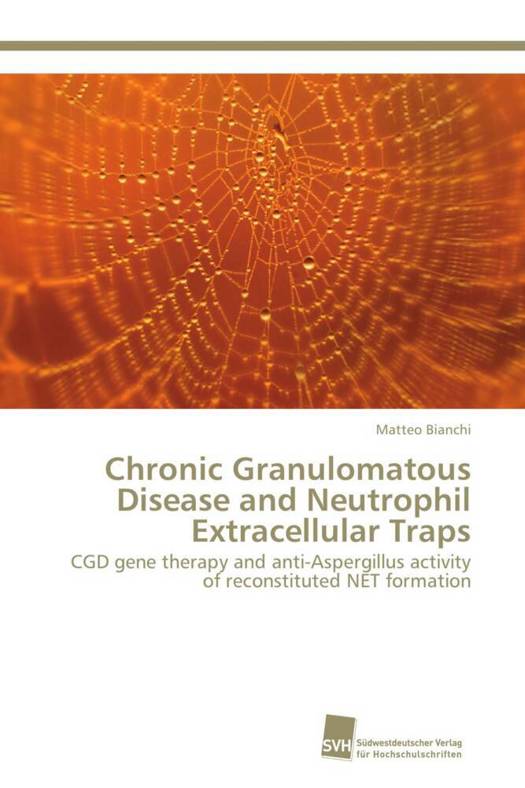
- Afhalen na 1 uur in een winkel met voorraad
- Gratis thuislevering in België vanaf € 30
- Ruim aanbod met 7 miljoen producten
- Afhalen na 1 uur in een winkel met voorraad
- Gratis thuislevering in België vanaf € 30
- Ruim aanbod met 7 miljoen producten
Zoeken
Chronic Granulomatous Disease and Neutrophil Extracellular Traps
CGD gene therapy and anti-Aspergillus activity of reconstituted NET formation
Matteo Bianchi
Paperback | Engels
€ 75,45
+ 150 punten
Omschrijving
Chronic granulomatous disease (CGD) is a group of primary immunodeficiencies caused by mutations in genes encoding phagocyte nicotinamide adenine dinucleotide phosphate (NADPH) oxidase subunits (gp91phox, p22phox, p47phox, p67phox, and p40phox). CGD phagocytes do not produce reactive oxygen species, kill microbes poorly and consequently patients are susceptible to recurrent life-threatening bacterial and fungal infections. Aspergillus spp. infections, which cause pneumonia and disseminated disease, are the leading cause of death in CGD patients. Up to now it was unclear how neutrophils control Aspergillus species in healthy individuals. We showed for the first time that the microbicidal pathway through neutrophil extracellular traps (NETs) is efficient against A. nidulans conidia and hyphae in vitro, and that restoration of NET formation was achieved by complementation of NADPH oxidase function by gene therapy in a patient with X-linked CGD. This aided clearing severe invasive A. nidulans infection in vivo. We demonstrated the critical role of NET-associate calprotectin for dose-dependent fungistatic of fungicidal anti-Aspergillus activity by Zn2+ sequestration.
Specificaties
Betrokkenen
- Auteur(s):
- Uitgeverij:
Inhoud
- Aantal bladzijden:
- 156
- Taal:
- Engels
Eigenschappen
- Productcode (EAN):
- 9783838133843
- Verschijningsdatum:
- 5/09/2012
- Uitvoering:
- Paperback
- Afmetingen:
- 152 mm x 220 mm
- Gewicht:
- 236 g

Alleen bij Standaard Boekhandel
+ 150 punten op je klantenkaart van Standaard Boekhandel
Beoordelingen
We publiceren alleen reviews die voldoen aan de voorwaarden voor reviews. Bekijk onze voorwaarden voor reviews.








